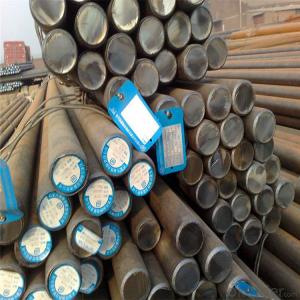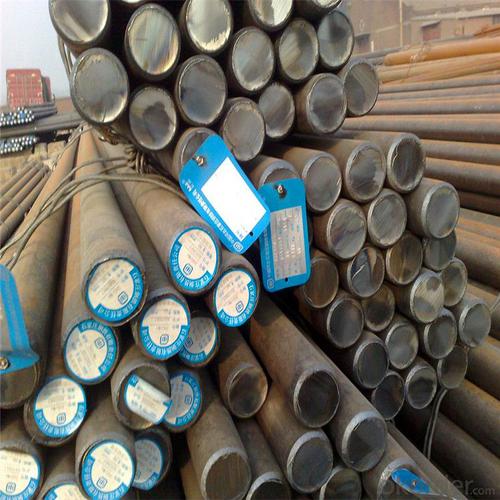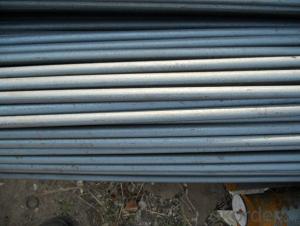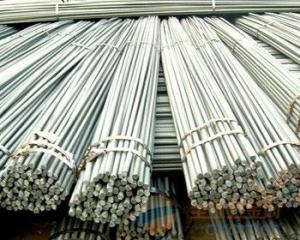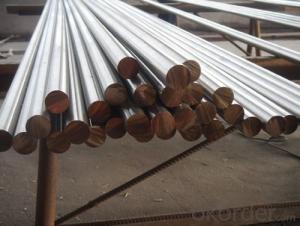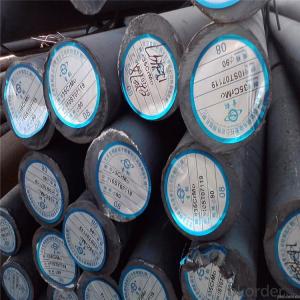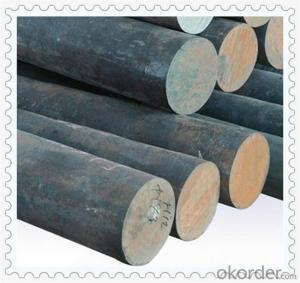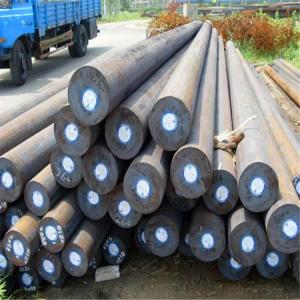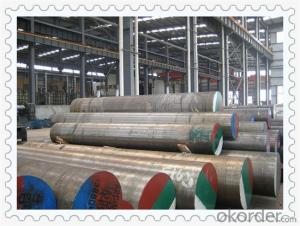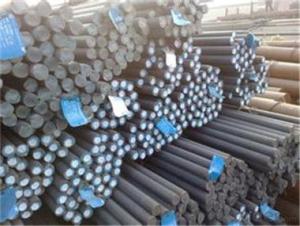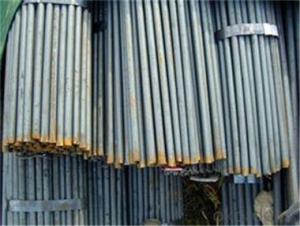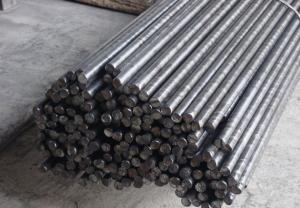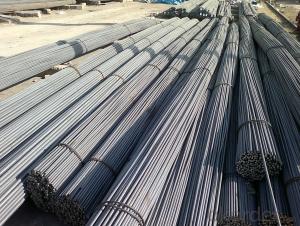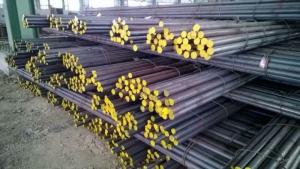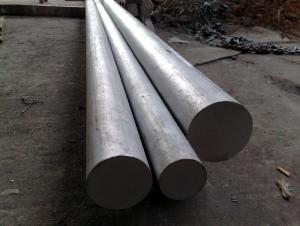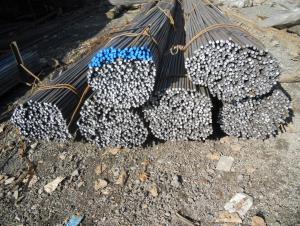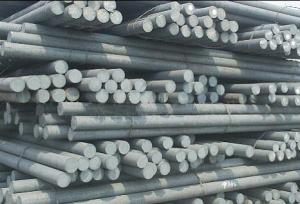SS400 C45 Round Bar S45C SAE1045 CK45 Steel
- Loading Port:
- Tianjin
- Payment Terms:
- TT OR LC
- Min Order Qty:
- 100 m.t.
- Supply Capability:
- 50000 m.t./month
OKorder Service Pledge
OKorder Financial Service
You Might Also Like
Specification
SS400 C45 Round Bar S45C SAE1045 CK45 Steel
Product Description of SS400 C45 Round Bar S45C SAE1045 CK45 Steel
1. Steel grade: SAE1045, 45#, C45, S45C
2. Length: 6M-12M
3. Diameter: 16mm-300mm
4. Product range: round bar, flat bar, square bar
5. Technique: Hot rolled, forged, cold drawn
Specification of SS400 C45 Round Bar S45C SAE1045 CK45 Steel
Material | C45 | Round bar | Dia(mm) | 16-300mm |
Process | EAF + LF + VD + Forged + Heat Treatment (optional) | Length (mm) | Max 12m | |
Heat treatment | Normalized / Annealed / Quenched / tempered | Flat bar | Thickness(mm) | 8-500mm |
Delivery condition | Hot forged +Rough machined (black surface after Q/T)+ Turned (optional) | Width(mm) | 70-200mm | |
Test | Ultrasonic test according to SEP 1921-84 D/d | Length (mm) | Max 12m |
Chemical Composition of SS400 C45 Round Bar S45C SAE1045 CK45 Steel
C | Si | Mn | Cr | Ni | Cu |
0.42~0.47 | 0.17~0.37 | 0.35~0.65 | ≤0.25 | ≤0.30 | ≤0.25 |
Photo Show of SS400 C45 Round Bar S45C SAE1045 CK45 Steel
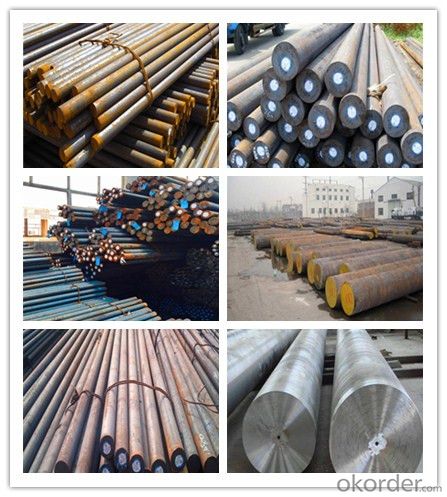
Packing and Delivery:
Packing in bundle package, or as customer's requirements.
Delivery Detail: 45 days after receiving the deposit.
Usage and Applications of SS400 C45 Round Bar S45C SAE1045 CK45 Steel
1. Steel round bar is used in a large number of architectural and engineering structures. Or it can be used in construction of plants for the production of steel house frames, high-voltage transmission towers, bridges, vehicles, boilers, containers, ships, etc.
2. And we can use this kind of product on the performance of the mechanical parts if the demand is not very high.
3. Some special material steel round bar can be used for main shaft of steamer, hummer shank, with big section and supper force.
Company Information
CNBM International Corporation is the most important trading platform of CNBM group.
Whith its advantages, CNBM International are mainly concentrate on Cement, Glass, Iron and Steel, Ceramics industries and devotes herself for supplying high qulity series of refractories as well as technical consultancies and logistics solutions.

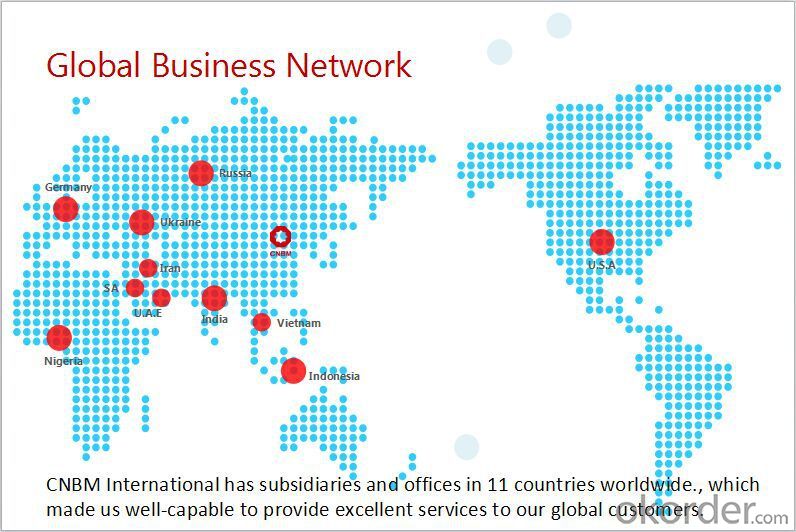
F A Q
1, Your advantages?
professional products inquiry, products knowledge train (for agents), smooth goods delivery, excellent customer solution proposale
2, Test & Certificate?
SGS test is available, customer inspection before shipping is welcome, third party inspection is no problem
3, Factory or Trading Company?
CNBM is a trading company but we have so many protocol factories and CNBM works as a trading department of these factories. Also CNBM is the holding company of many factories.
4, Payment Terms?
30% TT as deposit and 70% before delivery.
Irrevocable L/C at sight.
5, Trading Terms?
EXW, FOB, CIF, FFR, CNF
6, After-sale Service?
CNBM provides the services and support you need for every step of our cooperation. We're the business partner you can trust.
For any problem, please kindly contact us at any your convenient time.
We'll reply you in our first priority within 24 hours.
- Q: Can steel round bars be used for valve stem applications?
- Yes, steel round bars can be used for valve stem applications. Steel round bars are often used in various industrial applications, including valve stems, due to their strength, durability, and resistance to corrosion.
- Q: Can steel round bars be used for making suspension components?
- Certainly! Suspension components can indeed be made using steel round bars. Due to its exceptional strength and durability, steel is widely employed in the production of suspension components. These round bars can be either machined or forged into different shapes and sizes, allowing them to fulfill the specific demands of control arms, sway bars, and tie rods. By utilizing steel round bars, suspension components become capable of enduring the forces and stresses experienced during vehicle operation, thus ensuring stability, control, and safety.
- Q: How do you determine the strength of a steel round bar?
- Various methods can be used to determine the strength of a steel round bar, including physical testing and material specifications. One commonly used method involves conducting a tensile test, where the bar is pulled until it breaks. This test helps determine the ultimate tensile strength (UTS) of the steel, which is the maximum stress it can handle before fracturing. The UTS is typically measured in units of force per cross-sectional area, such as pounds per square inch (psi) or megapascals (MPa). Another important strength property to consider is the yield strength. This is the stress level at which the steel starts to permanently deform, without any increase in load. The yield strength is crucial in assessing the structural integrity of the bar, as it indicates the maximum load it can bear without undergoing plastic deformation. In addition to physical testing, the strength of a steel round bar can also be determined by examining its material specifications. Steel manufacturers provide information about the composition and mechanical properties of their products. This includes details about the steel grade, which indicates the alloying elements present in the steel and their concentrations. Different steel grades have varying strength properties, which can help assess the strength of the round bar. It is important to consider that factors like heat treatment or surface conditions can also influence the strength of a steel round bar. Heat treatment processes, such as quenching and tempering, can enhance the strength and hardness of the steel. Additionally, surface conditions like coatings or treatments can improve corrosion resistance. To accurately determine the strength of a steel round bar, it is recommended to consult the material specifications provided by the manufacturer and, if necessary, conduct physical tests like tensile testing.
- Q: How do you calculate the moment of inertia of a steel round bar?
- To calculate the moment of inertia of a steel round bar, you need to know its mass and the radius of gyration. The moment of inertia can be determined using the formula I = (1/4) * π * r^4, where I represents the moment of inertia and r is the radius of the round bar.
- Q: What is the difference between a bright and a hot rolled steel round bar?
- The manufacturing processes and resulting characteristics distinguish a bright steel round bar from a hot rolled steel round bar. To produce a hot rolled steel round bar, the steel billet or ingot is heated to a high temperature and then rolled through a series of rolling mills to achieve the desired shape. As a result, the bar has a rough surface texture with a scale layer on the outside. These bars are commonly used in structural applications where strength and durability are crucial. They have a rough appearance and may require additional processing, such as grinding or machining, to achieve a smooth surface finish. In contrast, a bright steel round bar, also known as a cold drawn or cold finished bar, is created by drawing the hot rolled steel bar through a series of dies at room temperature. This process enhances the dimensional accuracy, surface finish, and mechanical properties of the steel. The resulting bright steel bar has a smooth and shiny surface, devoid of scale or rough texture. These bars are frequently used in applications that require an excellent surface finish and tight dimensional tolerances, such as the production of precision components or for decorative purposes. In conclusion, the primary distinction between a bright and a hot rolled steel round bar lies in their surface finish, dimensional accuracy, and applications. Hot rolled steel bars feature a rough surface texture and are suitable for structural applications, while bright steel bars have a smooth and shiny surface finish, making them ideal for precision or decorative applications.
- Q: Are steel round bars resistant to abrasion?
- Steel round bars are typically resistant to abrasion. Steel is renowned for its strength and durability, allowing it to withstand the effects of friction and contact with other surfaces. However, the degree of abrasion resistance can differ based on the particular steel type and composition. Some steel grades, like hardened or alloy steels, are specifically engineered to possess enhanced resilience against abrasion. These steels undergo procedures like heat treatment or alloying to enhance their hardness and augment their ability to endure abrasion. All in all, steel round bars are a dependable option for situations where abrasion resistance is crucial.
- Q: What are the typical price ranges for steel round bars?
- The price of steel round bars can differ depending on multiple factors, such as the steel type, diameter, length, and quantity purchased. Generally, common carbon steel grades can be priced between $1 and $5 per foot. However, specialty and high-grade steel round bars can have higher prices, ranging from $5 to $20 per foot or more. Moreover, larger diameter or longer length steel round bars may also be more expensive due to increased material and manufacturing costs. It is important to note that these price ranges are approximate and can vary depending on market conditions, supplier pricing, and other factors. To obtain an accurate price range, it is advisable to contact steel suppliers or distributors for specific quotes based on your requirements.
- Q: 12 of the diameter of the round steel can be M12 out of the thread is not
- No problem。 M12 coarse thread of the pitch is 1.75, the outer circle to be processed to 11.8mm, the thread of the most beautiful shape. If the outer circle is too large, the tip of the tooth is too small and very easy to deform.
- Q: Can steel round bars be used in high-pressure applications?
- Yes, steel round bars can be used in high-pressure applications. Steel round bars are known for their strength and durability, making them suitable for various industrial and mechanical applications. They have the ability to withstand high pressure and provide structural stability, making them a popular choice in industries such as oil and gas, construction, and manufacturing. However, it is important to choose the right grade and quality of steel round bars to ensure they can withstand the specific pressure requirements of the application.
- Q: What is the cost of a steel round bar?
- The cost of a steel round bar can vary depending on several factors such as the size, grade, and supplier. Generally, the larger the diameter and length of the round bar, the higher the cost. The grade of steel also plays a significant role in determining the price, as different grades have varying levels of strength and durability. Additionally, the supplier and location can impact the cost due to factors like transportation and market demand. To get an accurate cost estimate, it is best to contact a local supplier or check online metal marketplaces for current prices.
Send your message to us
SS400 C45 Round Bar S45C SAE1045 CK45 Steel
- Loading Port:
- Tianjin
- Payment Terms:
- TT OR LC
- Min Order Qty:
- 100 m.t.
- Supply Capability:
- 50000 m.t./month
OKorder Service Pledge
OKorder Financial Service
Similar products
Hot products
Hot Searches
Related keywords
